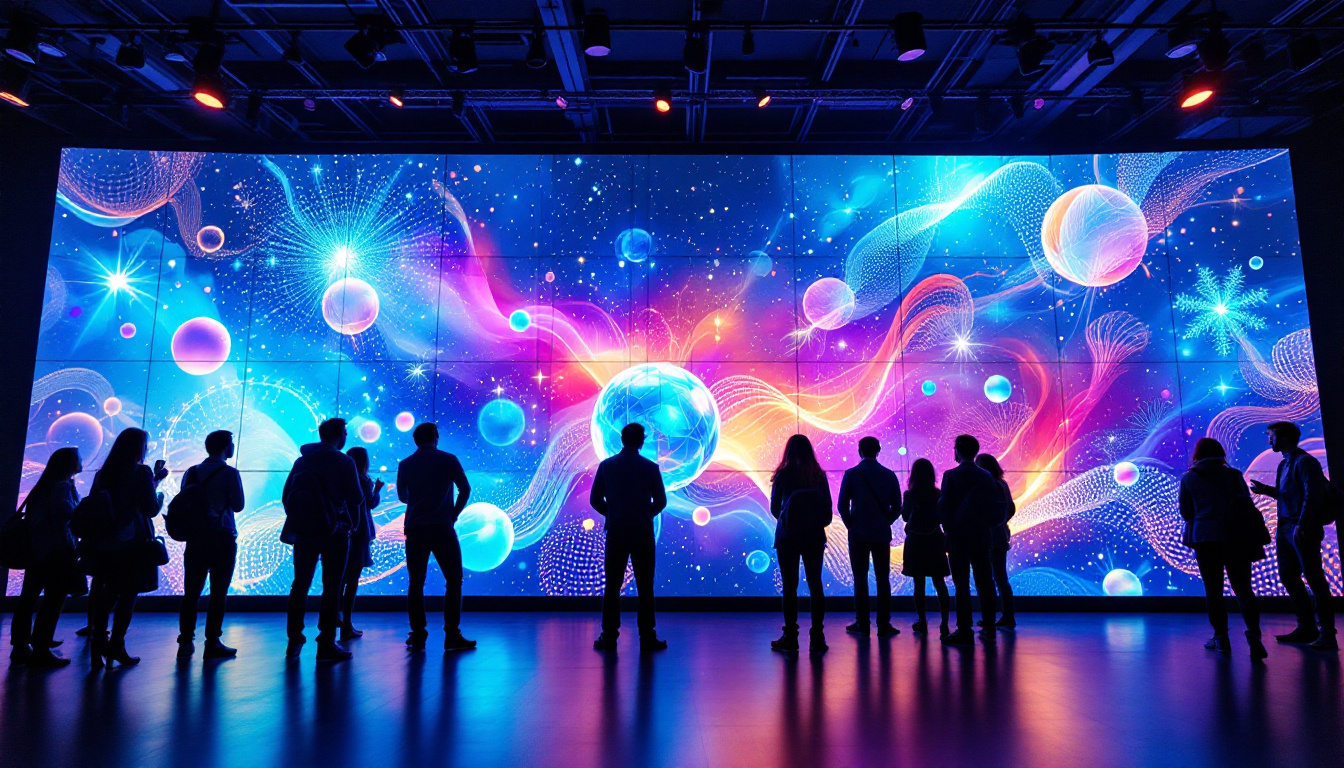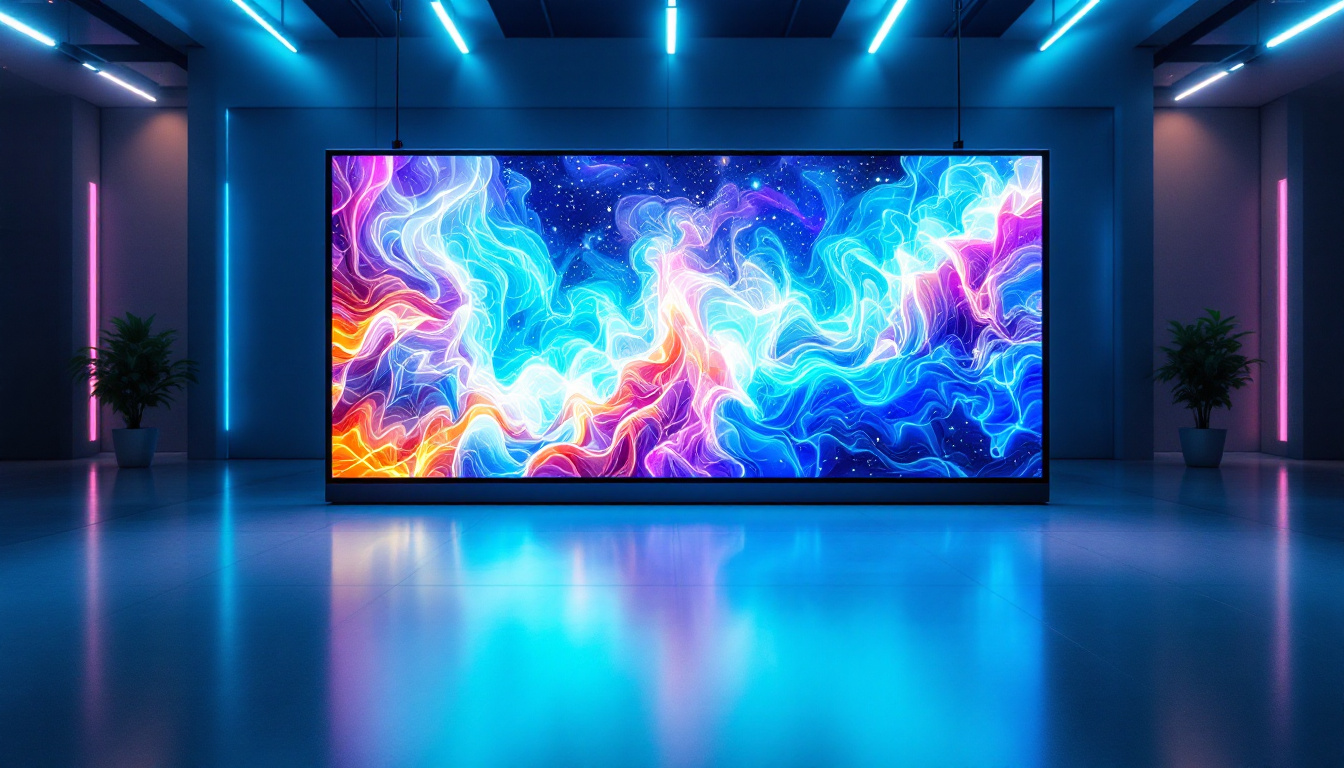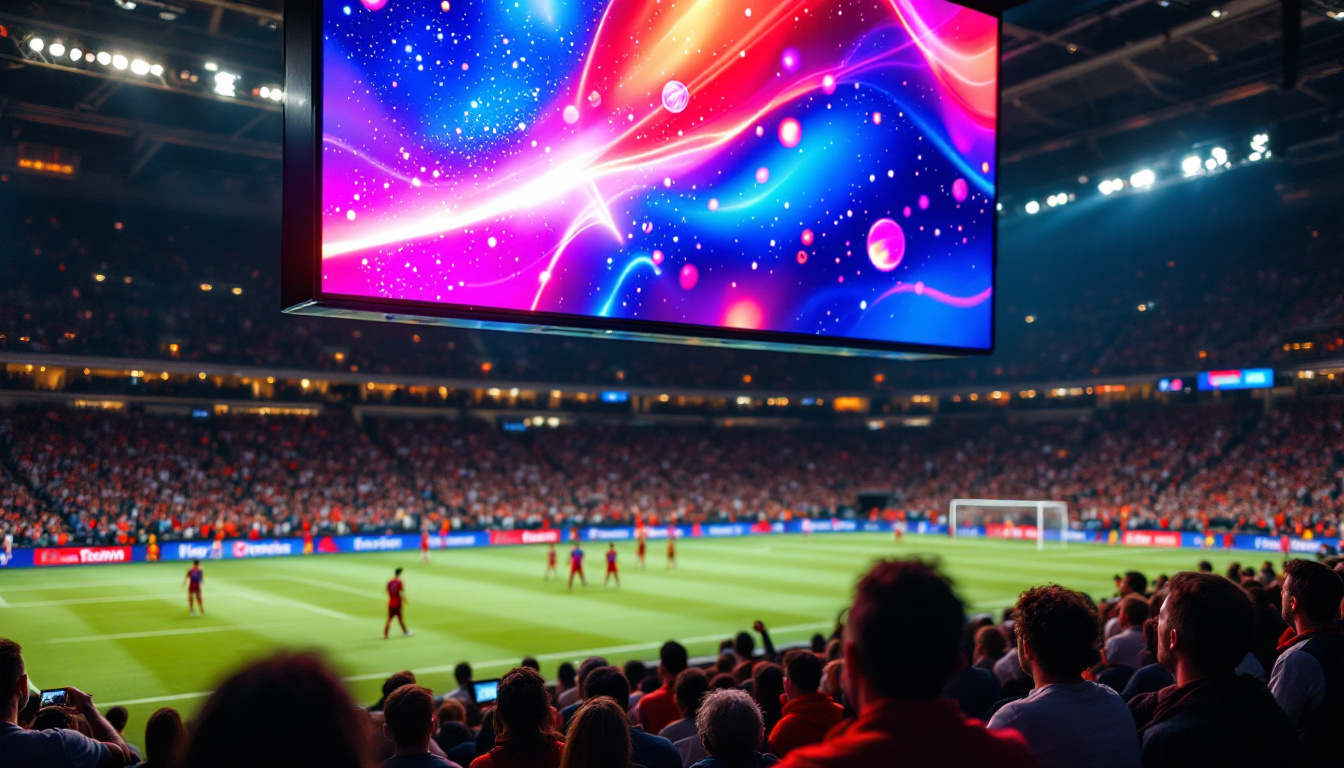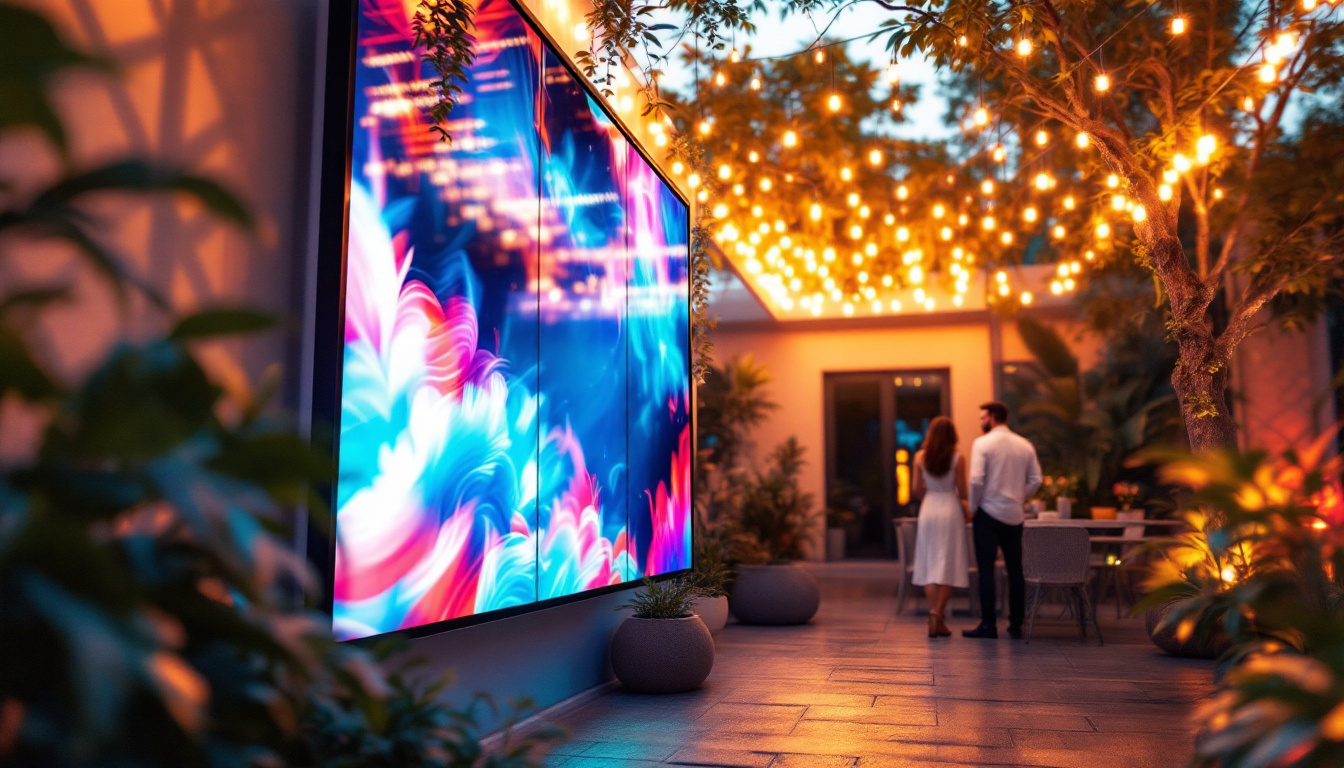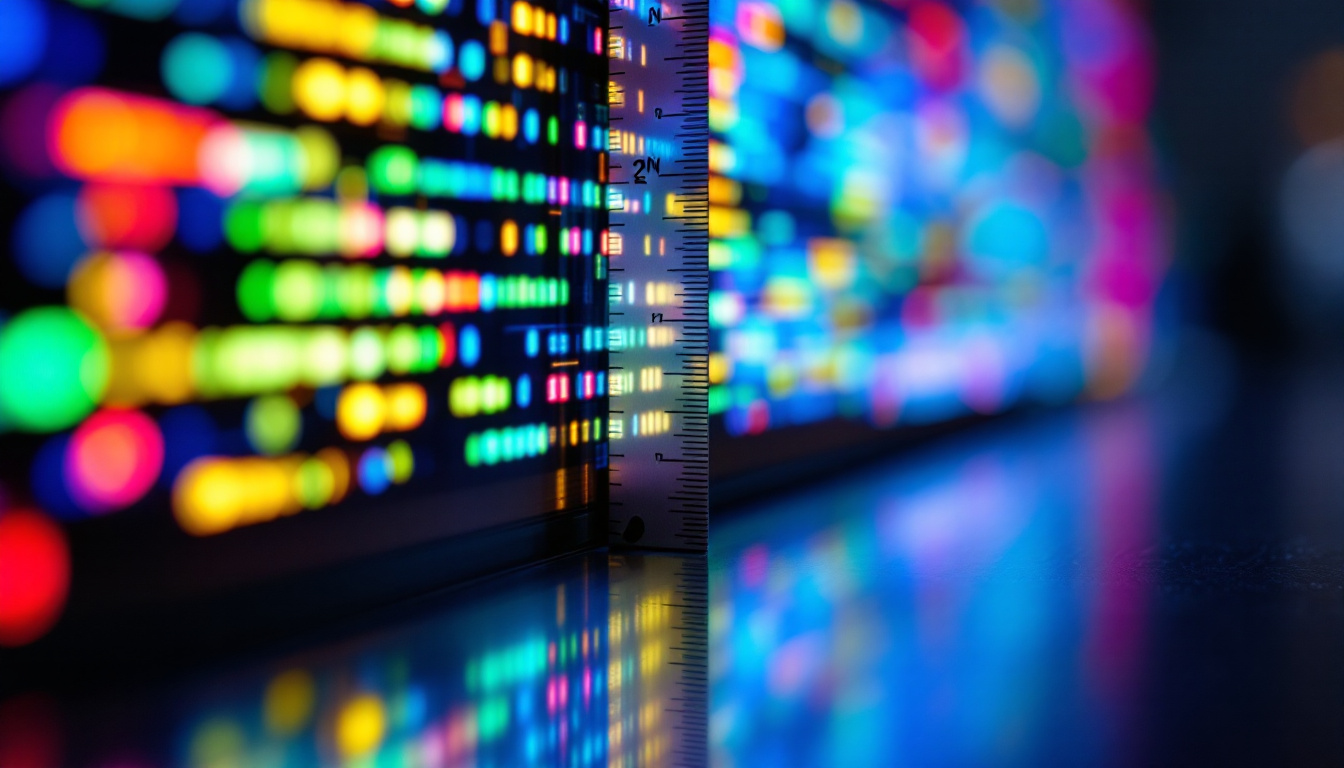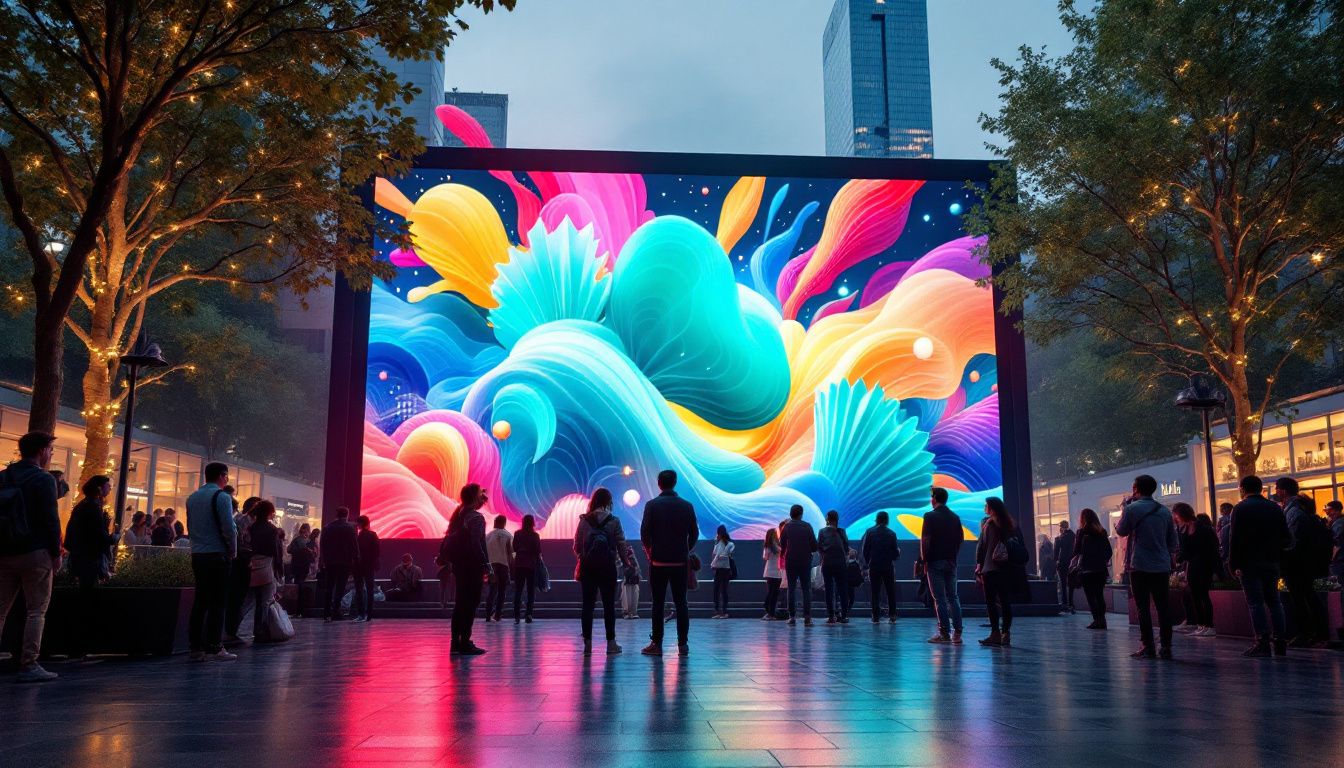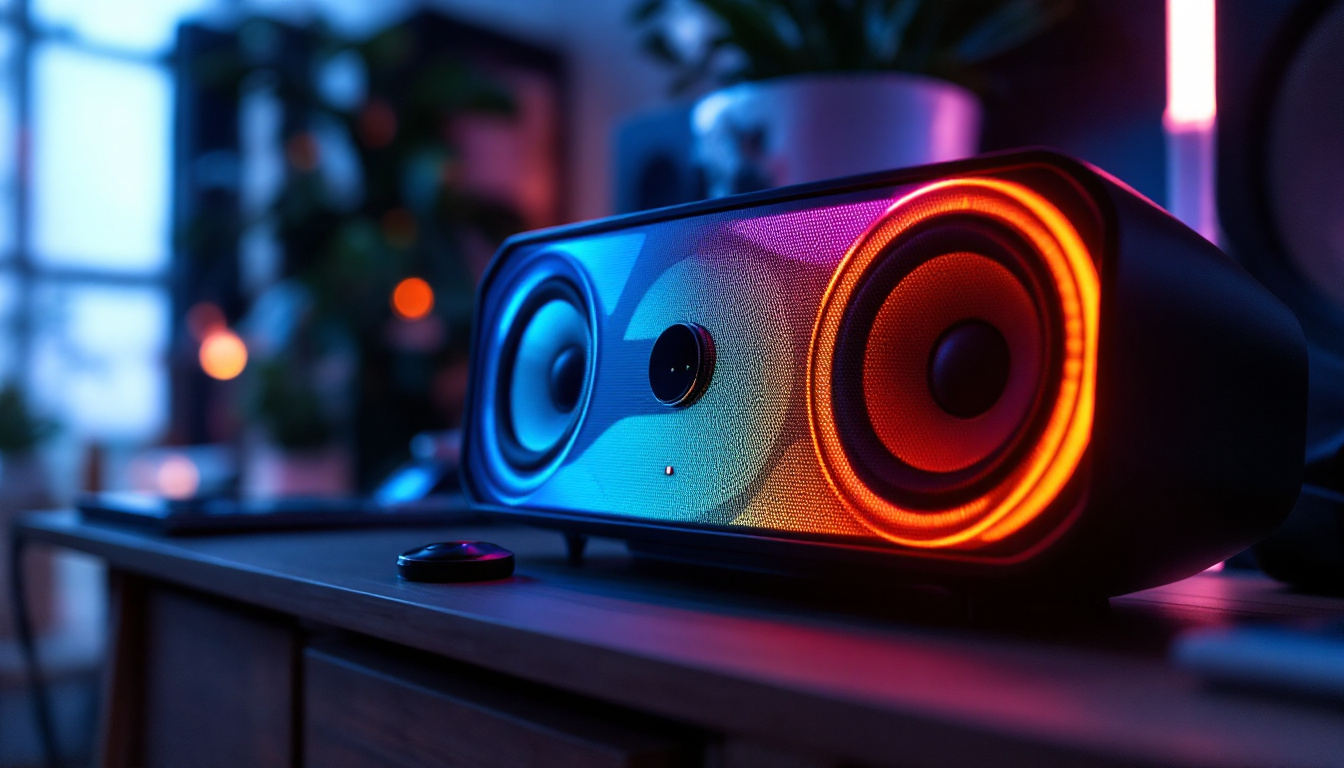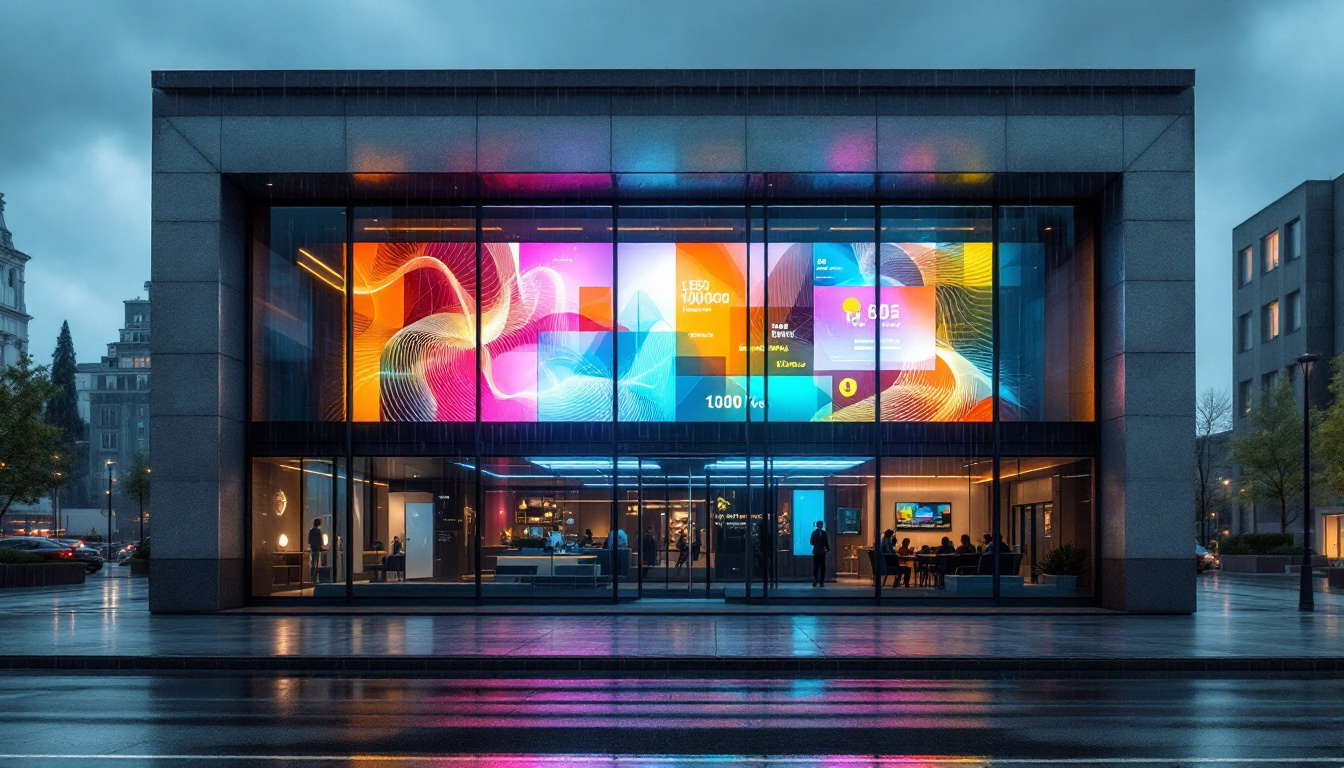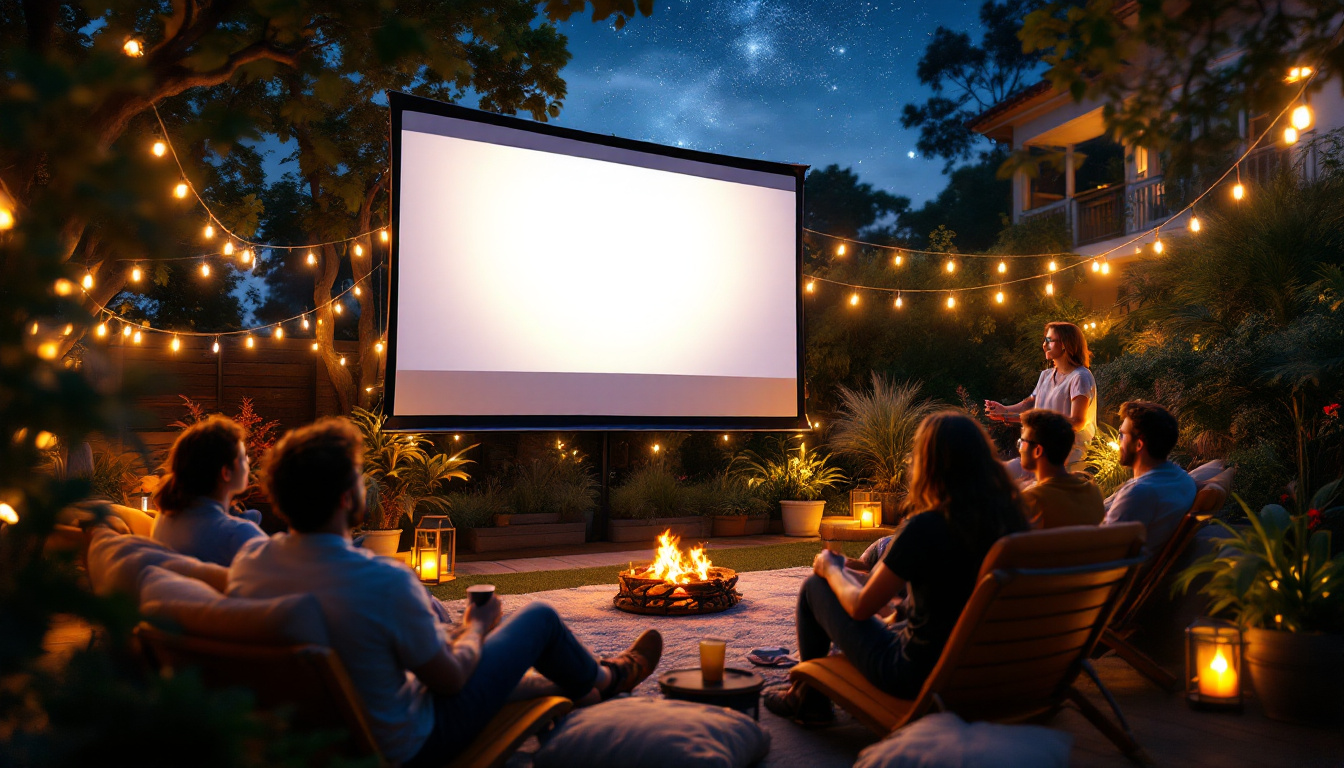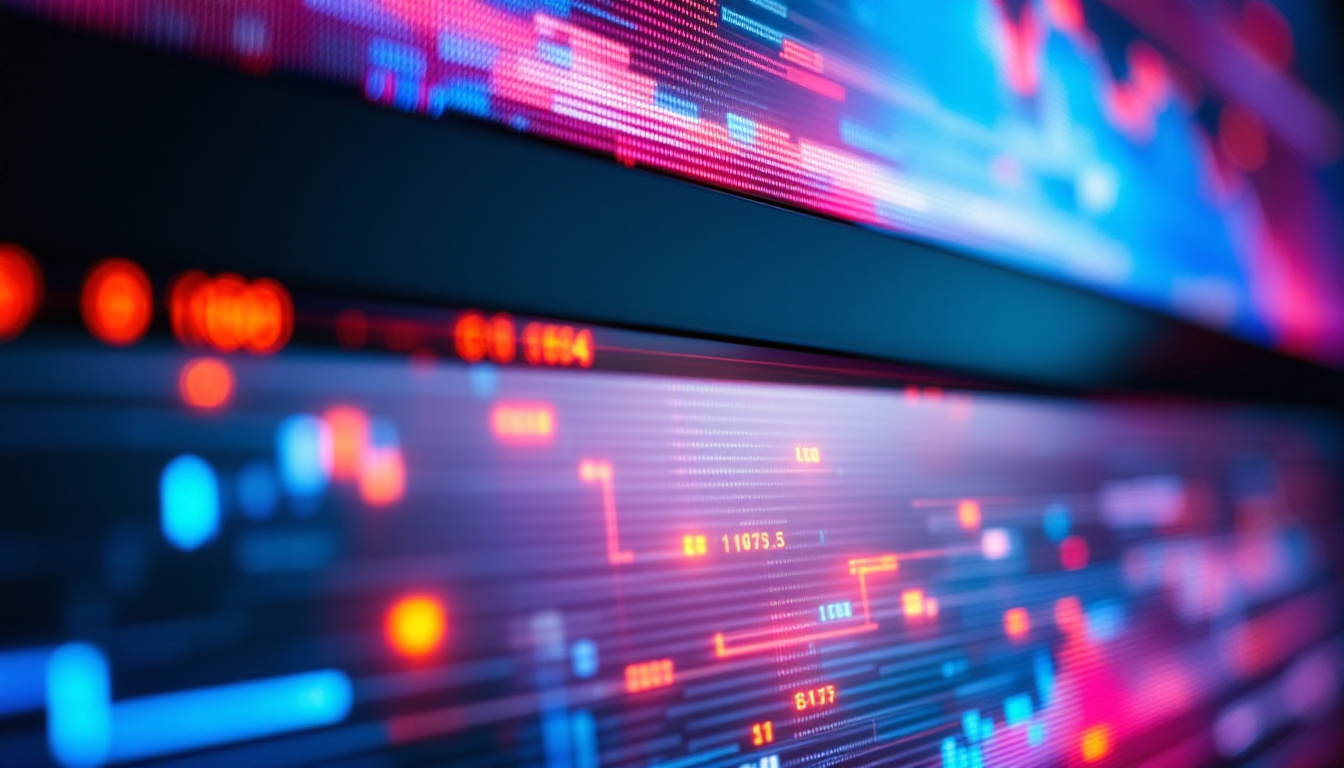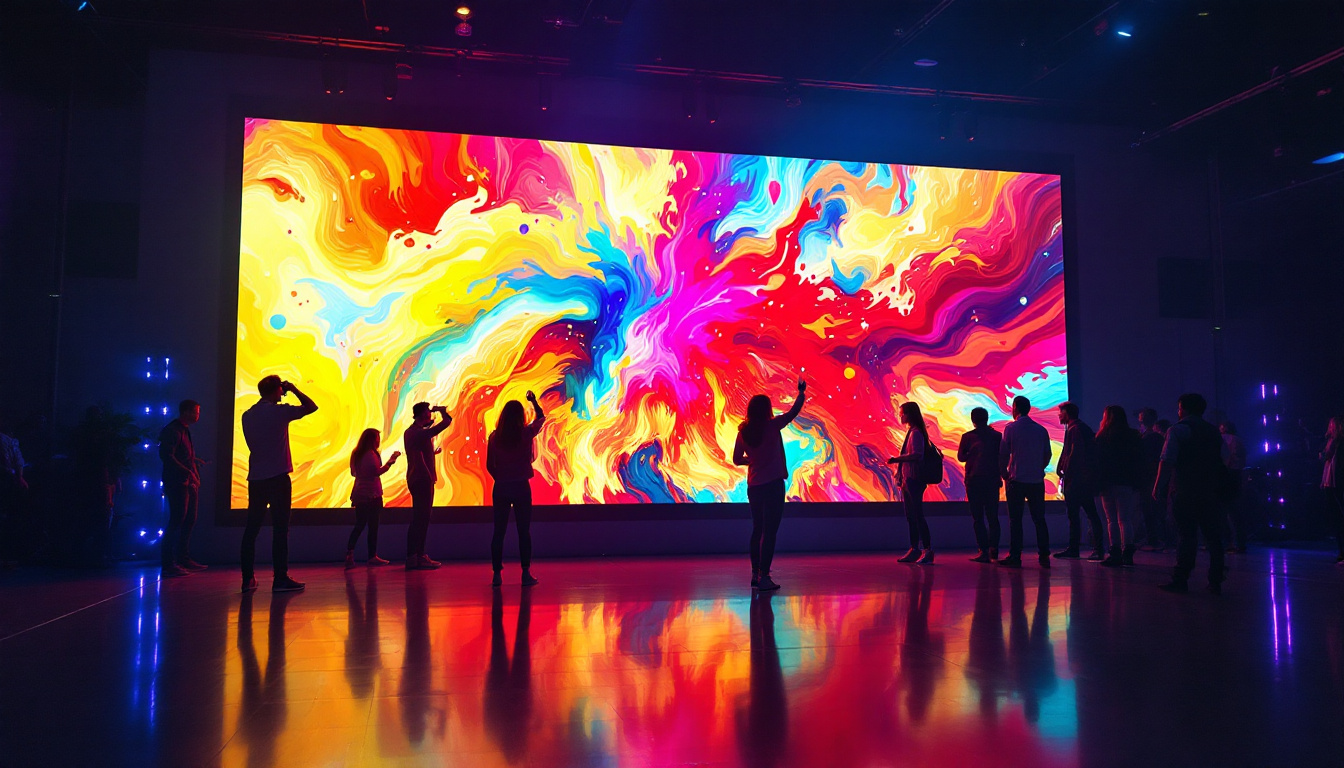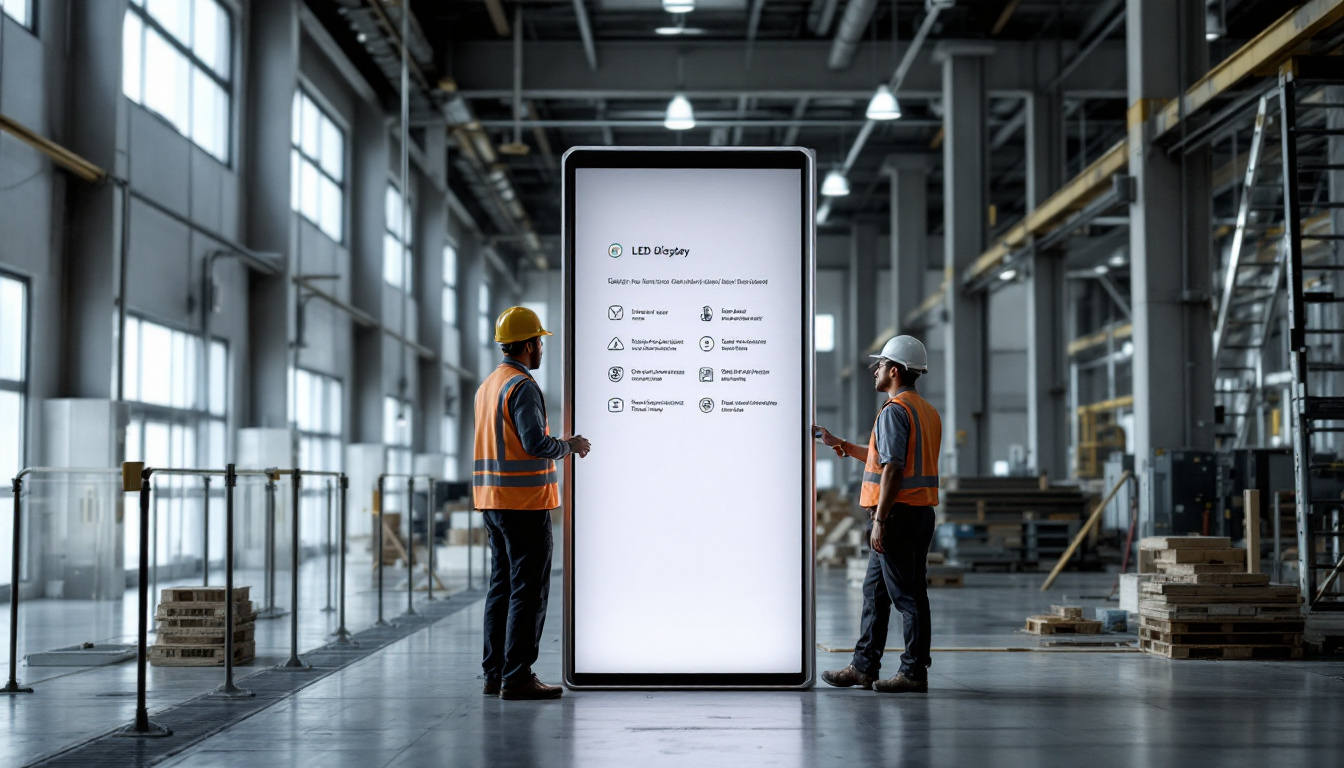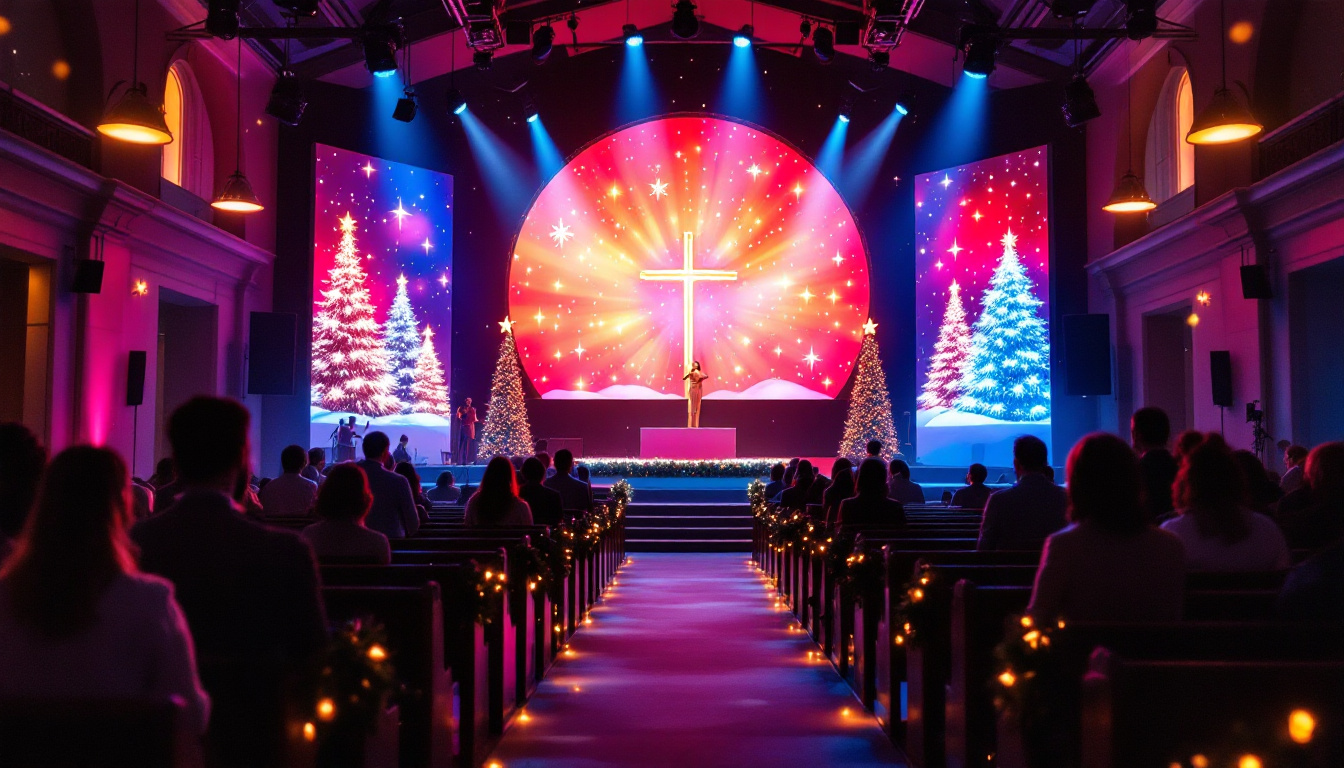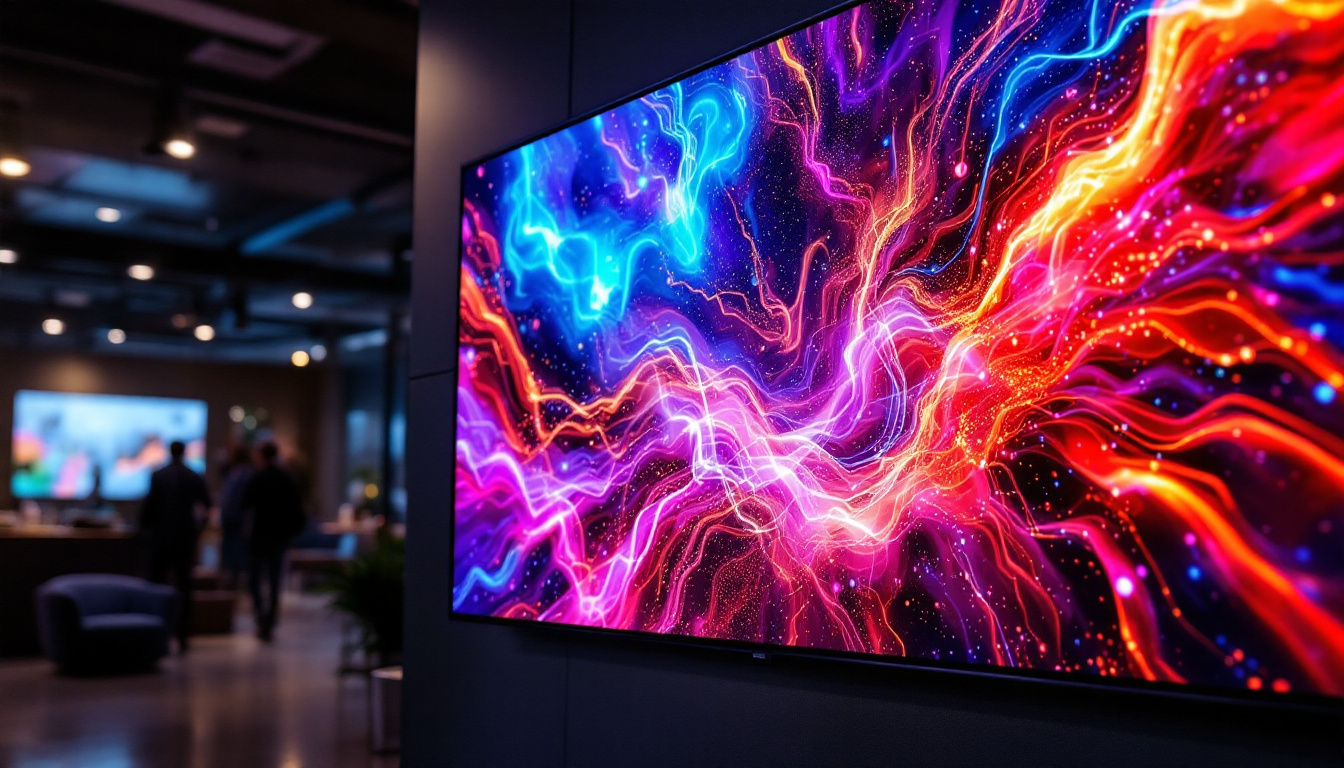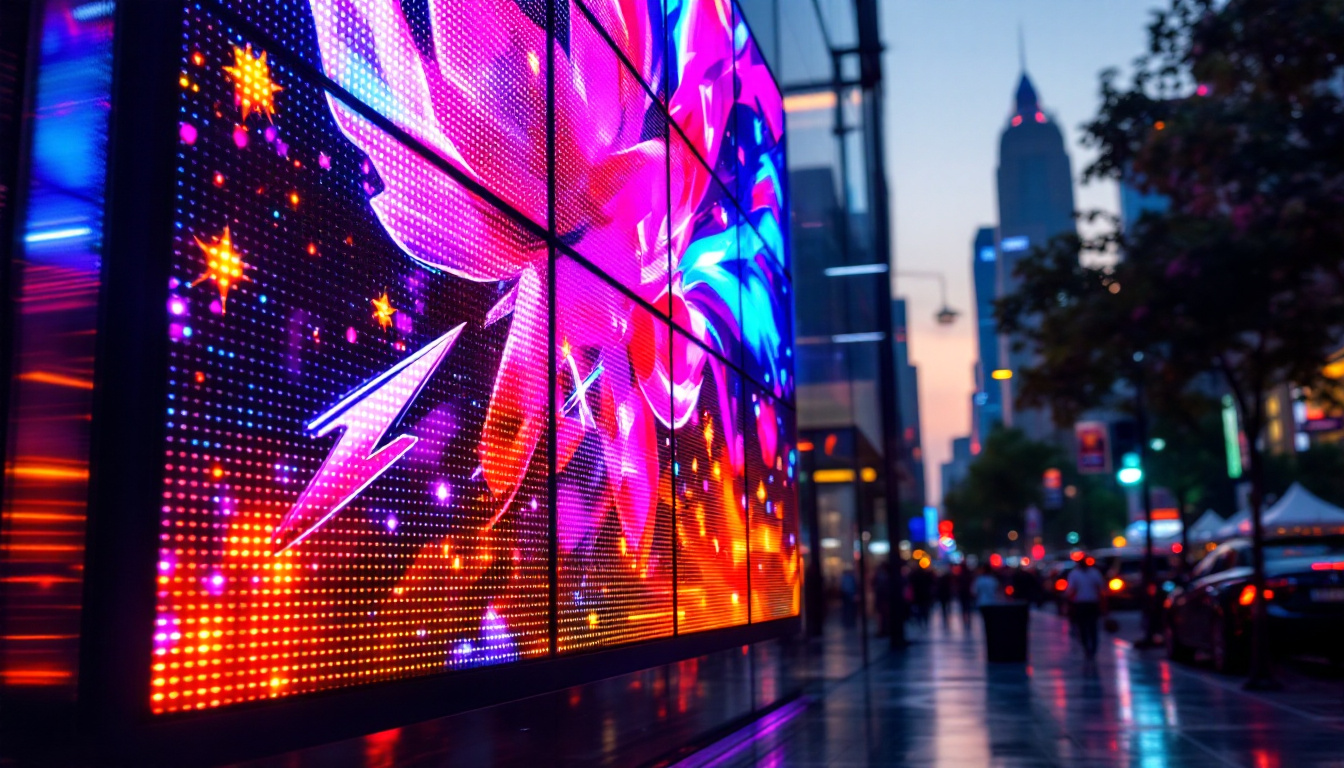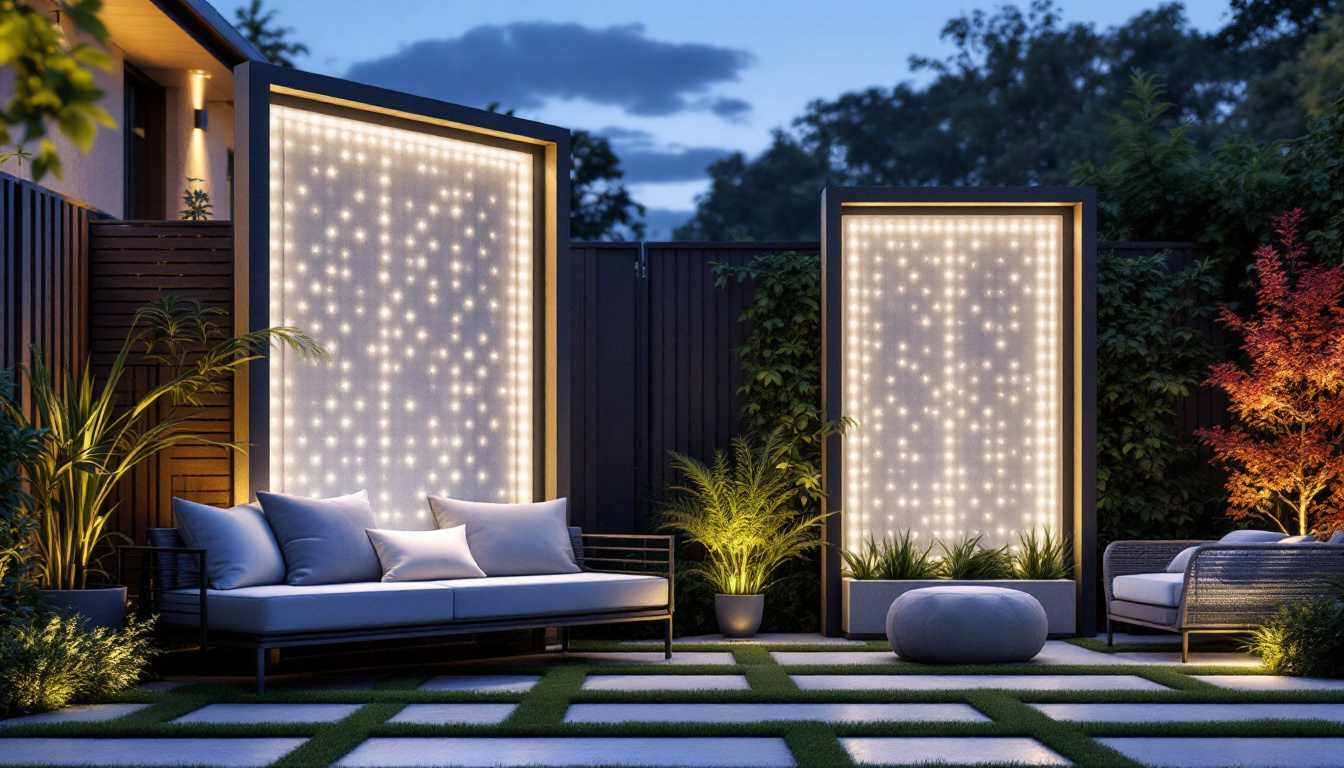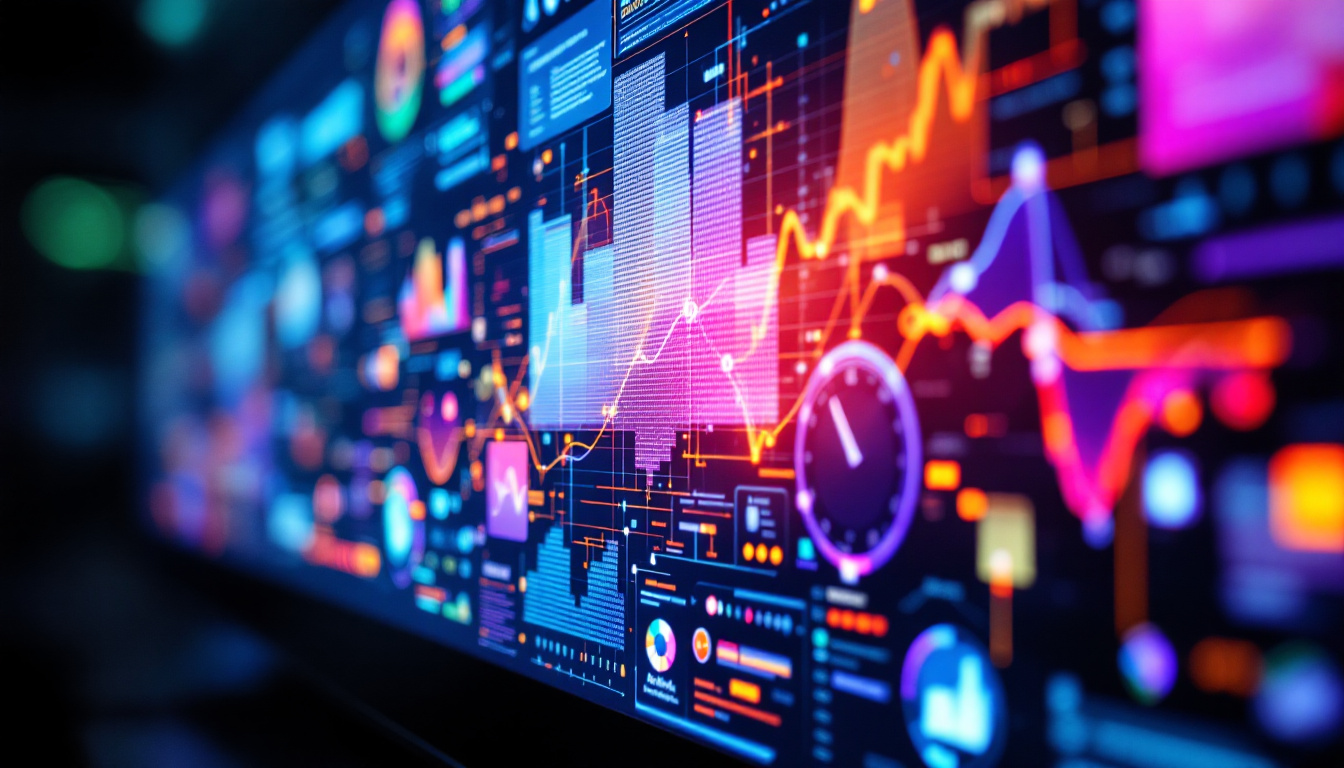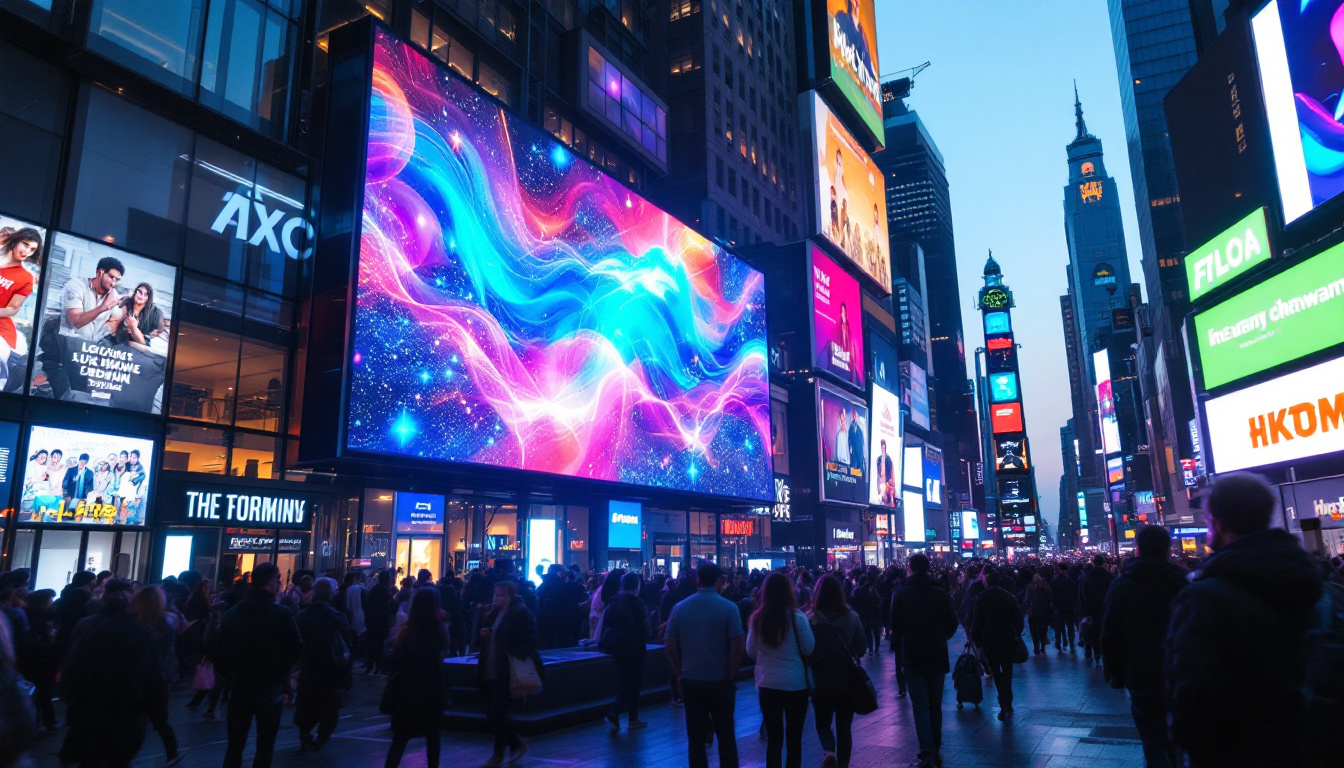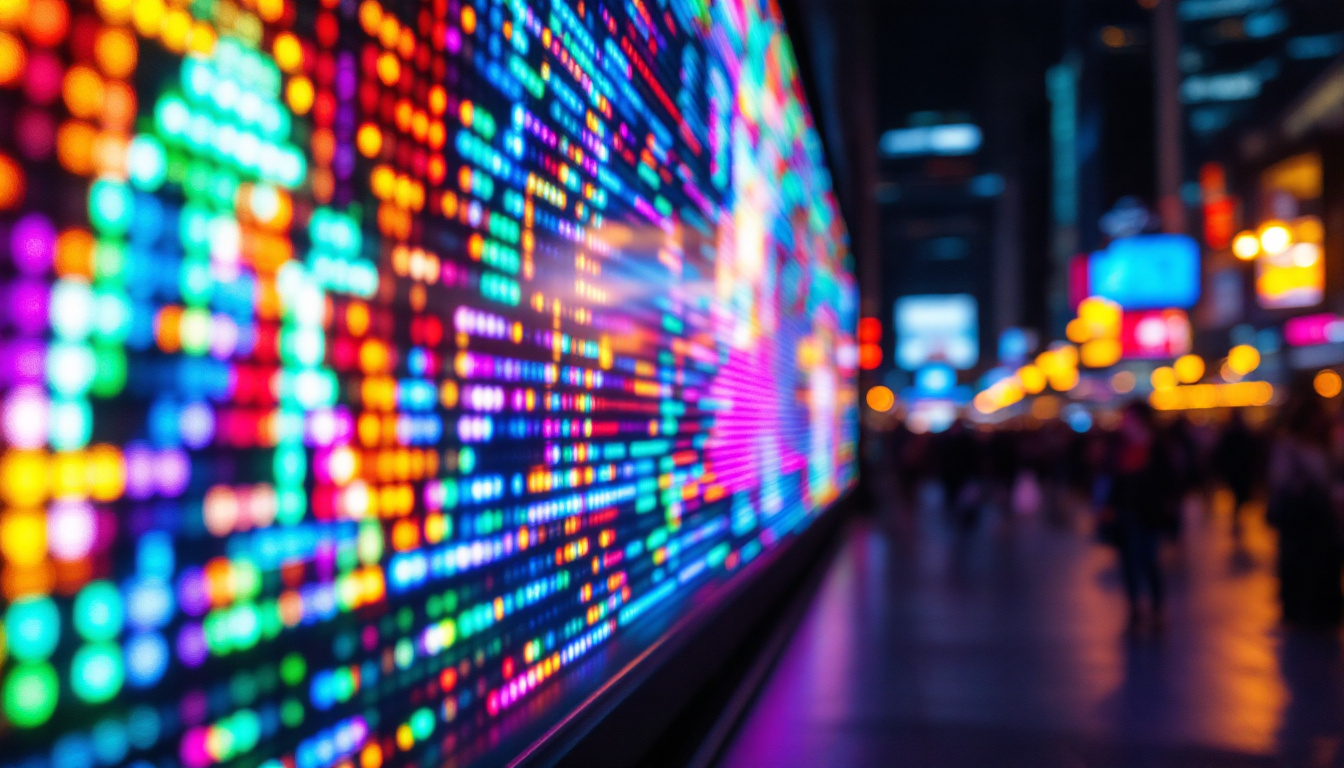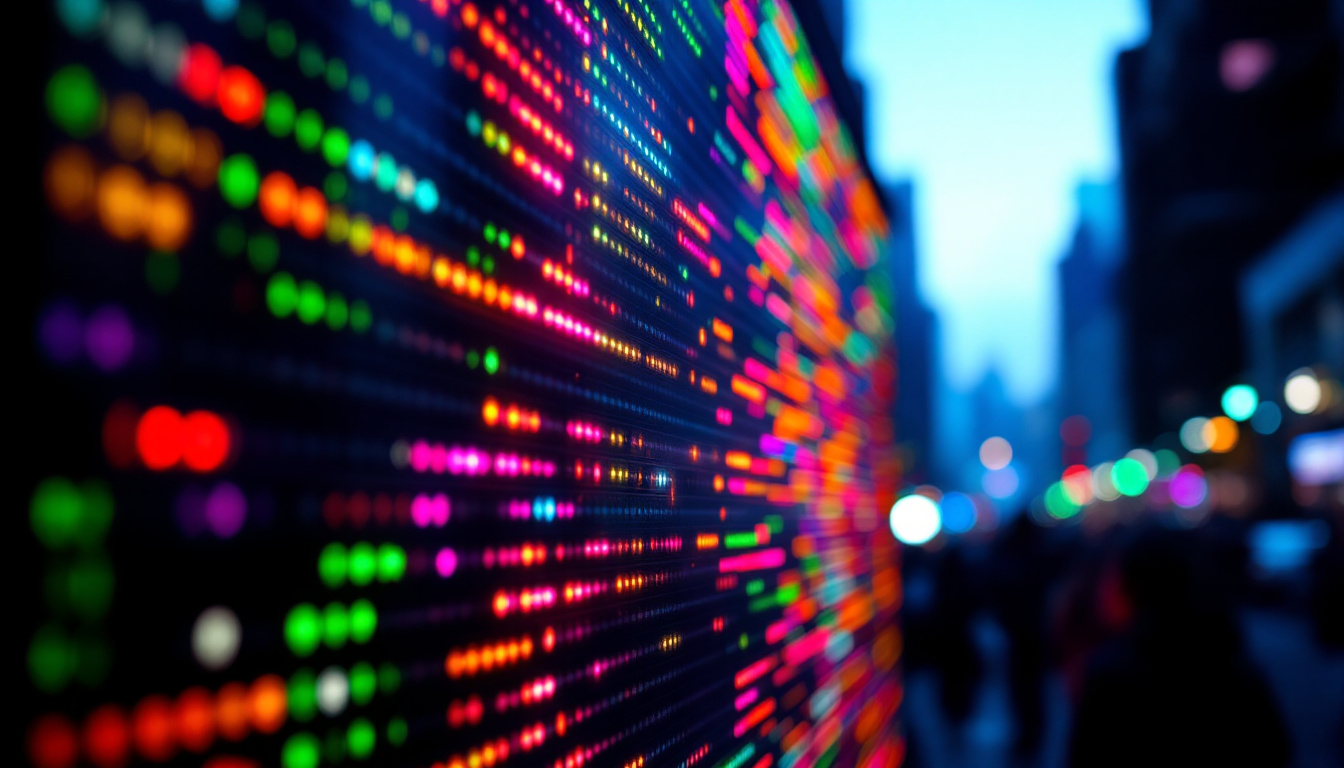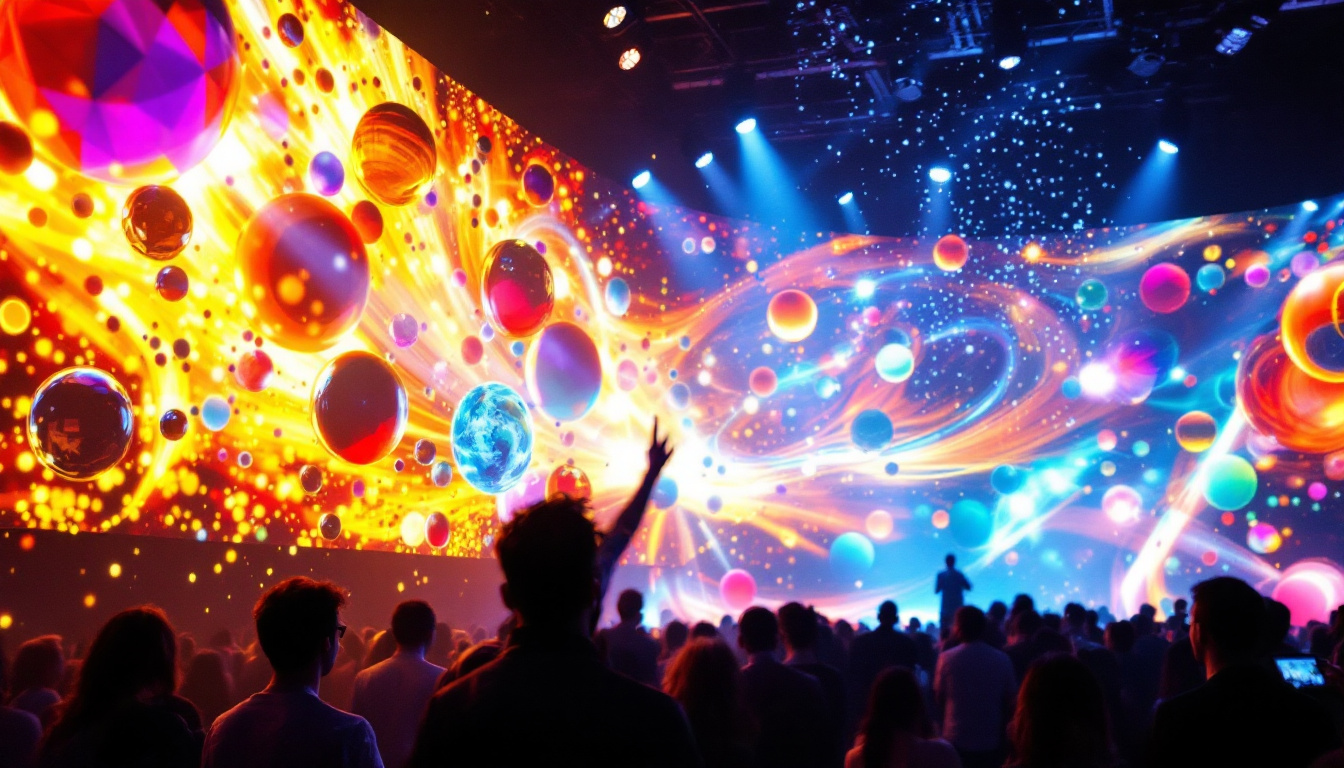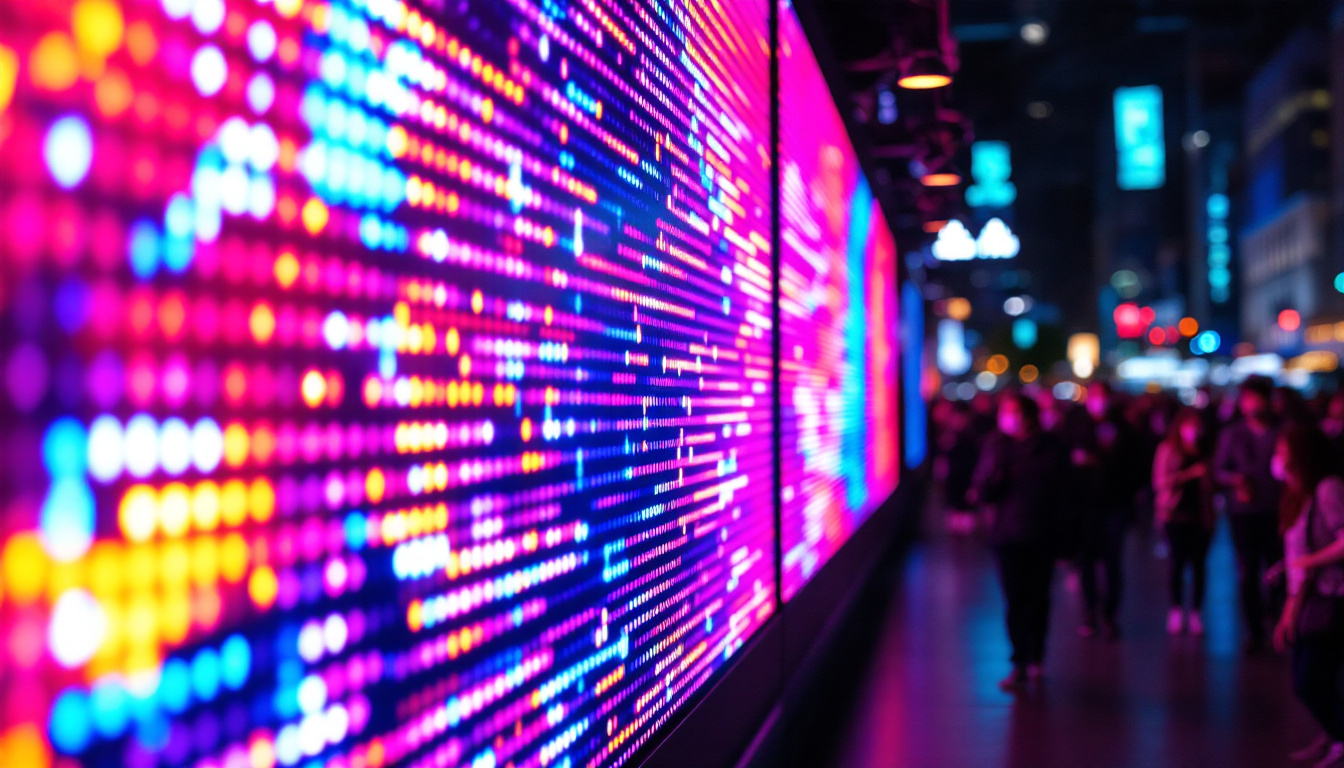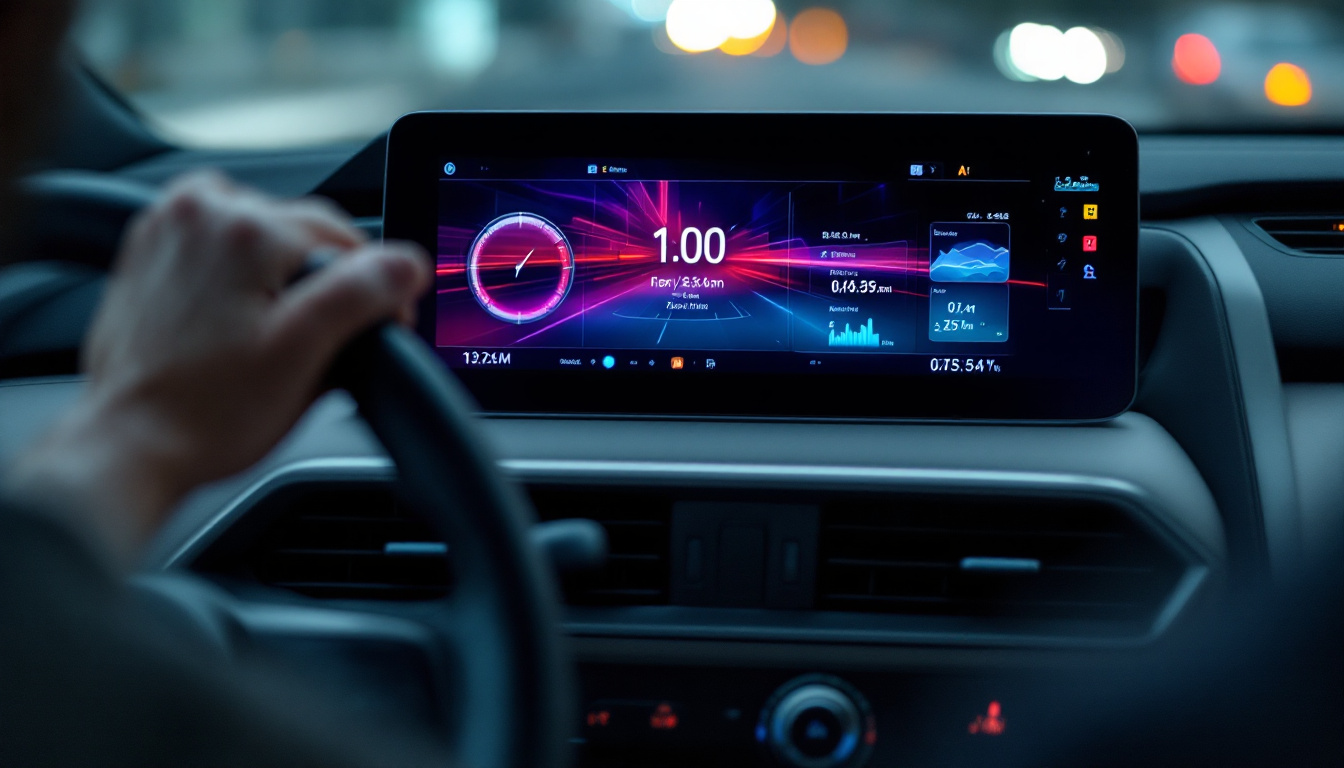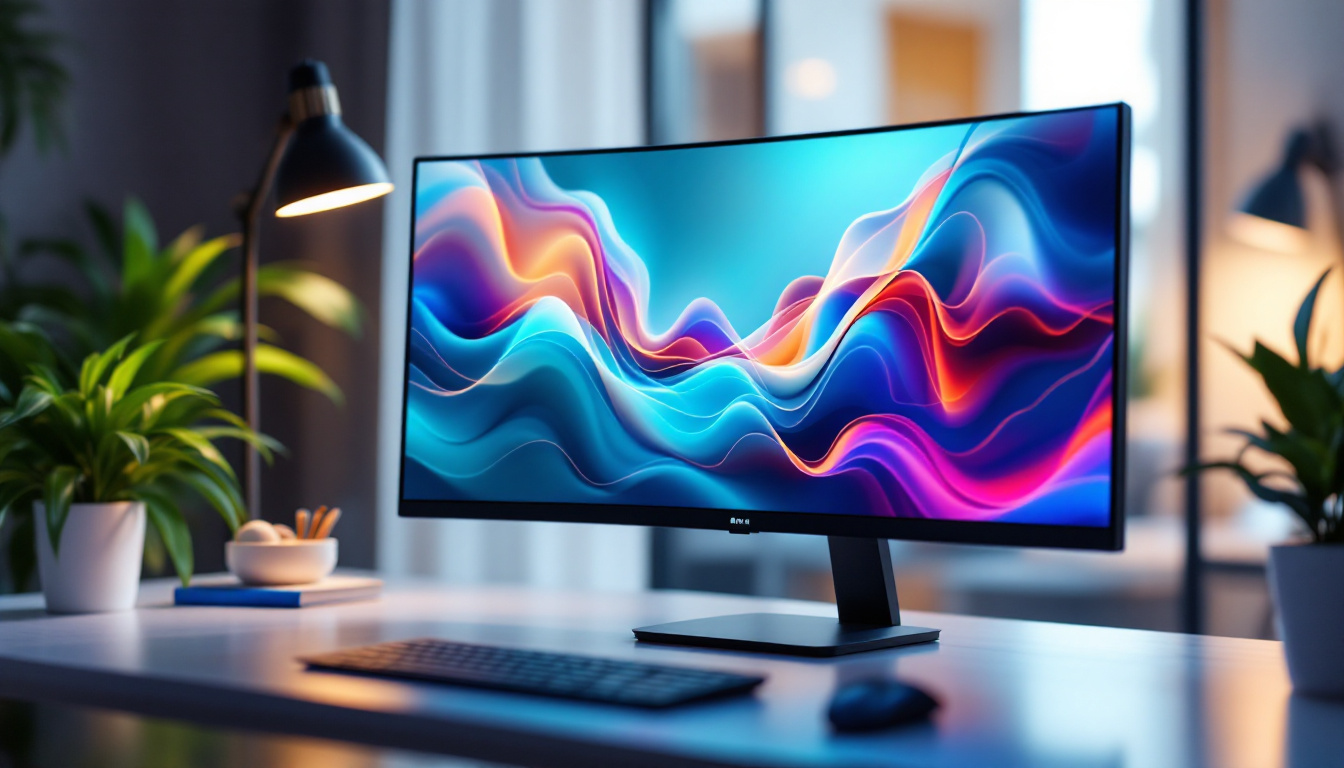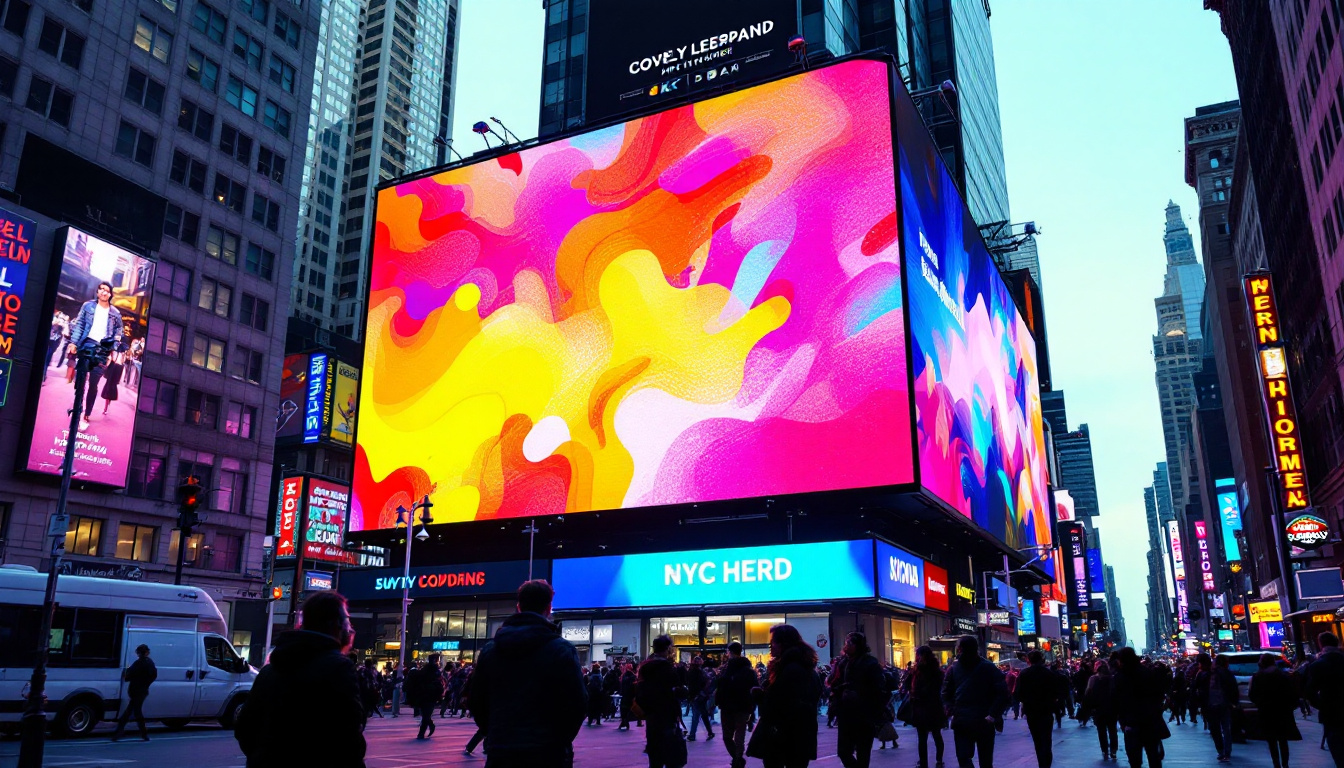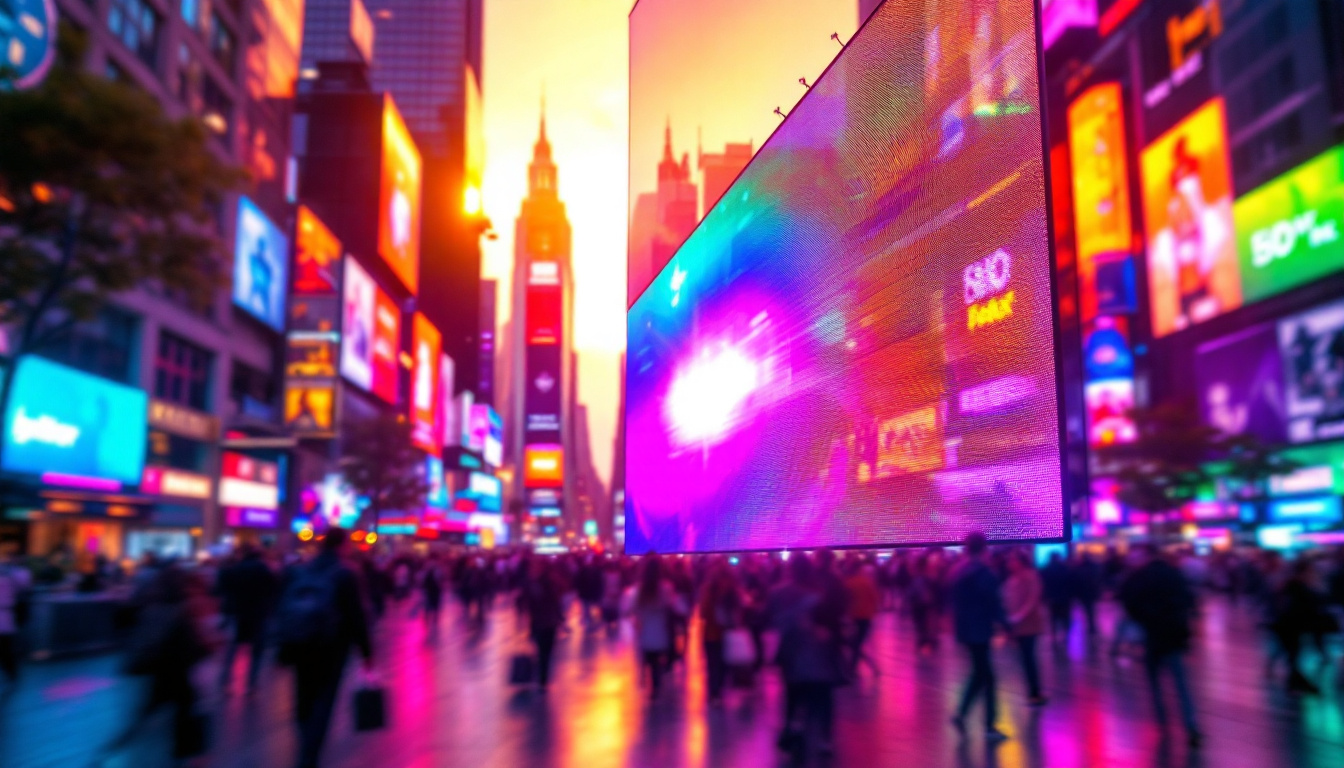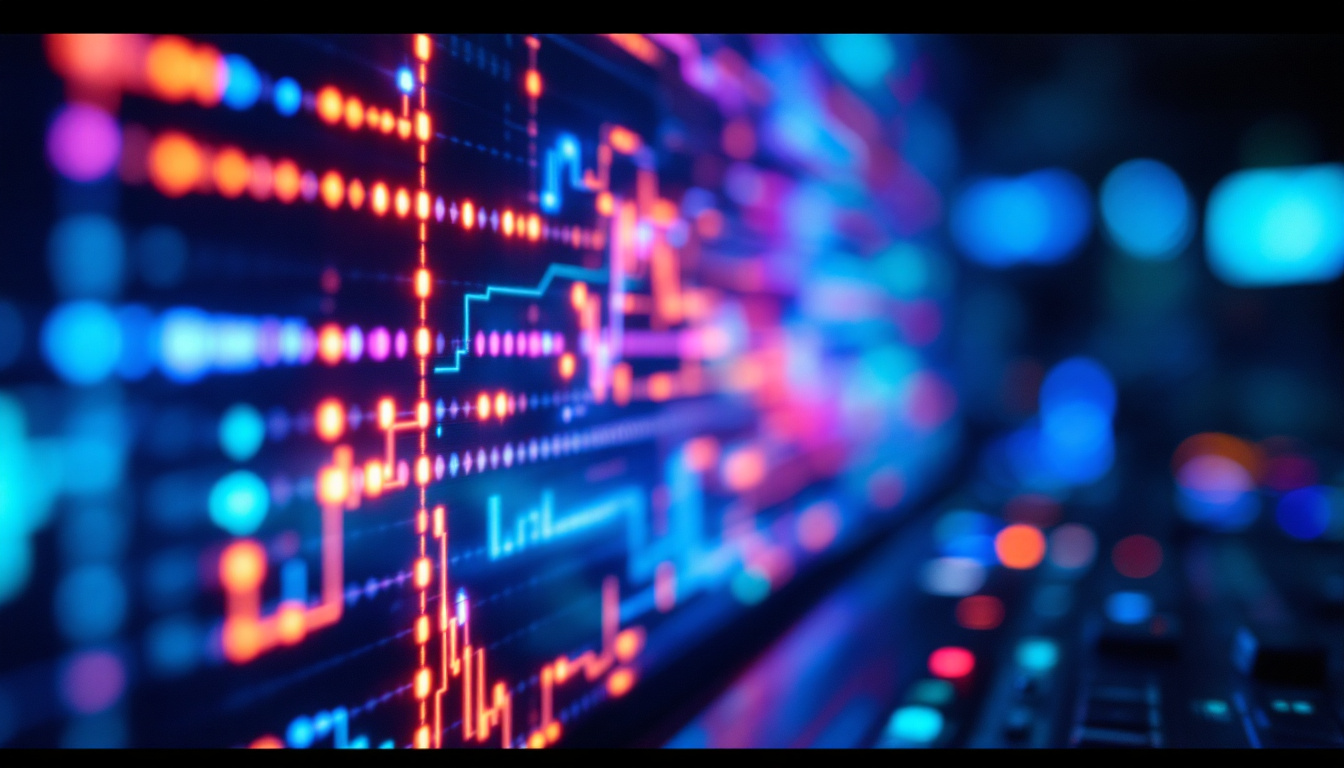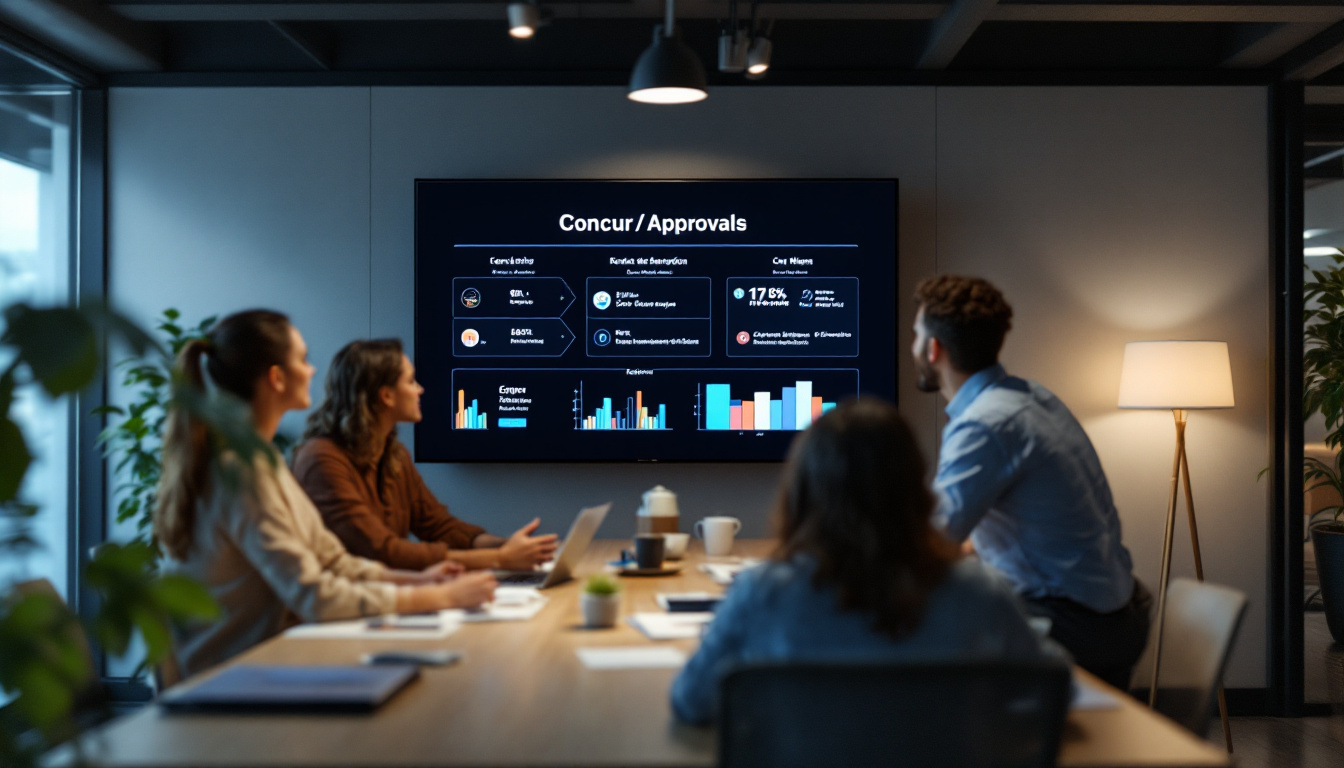Wall Background HD: LED Display Explained
In the age of digital transformation, the demand for high-quality visual displays has surged. One of the most prominent technologies that have emerged in this space is the LED display. These displays are not only versatile but also provide stunning visual clarity, making them ideal for various applications, from advertising to entertainment. This article delves into the intricacies of wall background HD LED displays, exploring their features, benefits, and applications.
Understanding LED Technology
LED, or Light Emitting Diode, is a semiconductor device that emits light when an electric current passes through it. This technology has revolutionized the way we view images and videos, offering a range of advantages over traditional display methods.
The Basics of LED Displays
LED displays are composed of numerous small diodes that work together to create a larger image. These displays can be categorized into two main types: direct view and rear-projection. Direct view LED displays are commonly used for large-scale installations, while rear-projection systems are often found in smaller settings. The choice between these types depends on the specific requirements of the application. In addition to these types, there are also variations such as OLED (Organic LED) and MicroLED, which offer even greater flexibility in terms of design and performance. OLED displays, for instance, are known for their exceptional contrast ratios and ability to produce true blacks, making them ideal for high-end televisions and smartphones.
Advantages of LED Displays
One of the primary advantages of LED displays is their brightness. They can produce vibrant colors and sharp images, even in well-lit environments. Additionally, LED technology is energy-efficient, consuming less power compared to traditional display technologies like LCD and plasma. This efficiency not only reduces operational costs but also contributes to a lower carbon footprint. Furthermore, LED displays have a longer lifespan, often exceeding 50,000 hours, which means less frequent replacements and reduced waste. This longevity is particularly beneficial for businesses and organizations that rely on constant display usage, as it minimizes downtime and maintenance costs. Moreover, the durability of LED technology makes it suitable for outdoor applications, where exposure to the elements can be a concern. With advancements in weatherproofing and protective coatings, outdoor LED displays can withstand harsh conditions while delivering exceptional performance.
Key Features of HD LED Displays
high-definition (HD) LED displays offer enhanced image quality and resolution, making them suitable for a wide range of applications. The key features that set HD LED displays apart include resolution, refresh rate, and viewing angles.
Resolution and Image Quality
Resolution is a critical factor in determining the quality of an LED display. HD displays typically offer resolutions of 720p, 1080p, or even 4K, providing sharp and detailed images. The higher the resolution, the more pixels are used to create the image, resulting in clearer visuals. This is particularly important for applications such as digital signage, where clarity is essential for conveying messages effectively. Furthermore, the advancements in pixel density mean that even large screens can maintain high fidelity without visible pixelation, making them ideal for both close-up and distant viewing. This level of detail is crucial in environments such as retail, where vibrant visuals can attract customers and enhance their shopping experience.
Refresh Rate and Motion Clarity
The refresh rate of an LED display refers to how many times per second the image is refreshed. A higher refresh rate leads to smoother motion, which is crucial for applications involving video content. For instance, sports broadcasts or fast-paced video games benefit significantly from displays with high refresh rates, ensuring that motion appears fluid and natural. In addition, modern HD LED displays often incorporate technologies like motion interpolation, which can enhance the viewing experience by creating additional frames in between the original ones, further smoothing out fast-moving scenes. This is particularly advantageous in environments such as cinemas or gaming arenas, where every detail counts and the immersive experience is paramount.
Viewing Angles and Installation Flexibility
Another important feature of HD LED displays is their wide viewing angles. Unlike traditional LCD screens, which can lose color and clarity when viewed from an angle, LED displays maintain their quality regardless of the viewer’s position. This characteristic makes them ideal for public spaces where multiple viewers may be watching from different angles. Additionally, LED displays can be installed in various configurations, including curved or irregular shapes, allowing for creative and engaging installations. This flexibility not only enhances aesthetic appeal but also enables the integration of displays into unique architectural designs, such as in museums or art galleries, where the display can become a part of the overall visual experience. Moreover, the lightweight nature of LED technology allows for easier mounting options, whether on walls, ceilings, or even suspended from structures, making them a versatile choice for any venue.
Applications of Wall Background HD LED Displays
The versatility of HD LED displays makes them suitable for a myriad of applications across different industries. From corporate environments to entertainment venues, the impact of these displays is undeniable.
Corporate and Commercial Use
In corporate settings, HD LED displays are often used for presentations, video conferencing, and digital signage. Their ability to convey information clearly and attractively makes them an invaluable tool for businesses looking to enhance communication and engagement. Digital signage, in particular, allows companies to showcase promotions, events, and important information in real-time, capturing the attention of customers and clients alike. Moreover, the integration of interactive features into these displays can further elevate the experience, enabling audiences to engage with the content through touch or mobile devices, thereby fostering a more dynamic and participatory atmosphere.
Entertainment and Events
In the entertainment industry, HD LED displays have become a staple for concerts, festivals, and sporting events. They are used to create immersive experiences, allowing audiences to enjoy high-quality visuals that complement performances. Additionally, LED displays are often employed in arenas and stadiums to provide live feeds, replays, and advertisements, enhancing the overall spectator experience. The ability to synchronize multiple displays across a venue also allows for stunning visual effects that can transform the atmosphere, making events more memorable. Furthermore, advancements in LED technology, such as flexible and transparent displays, are paving the way for innovative applications in stage design and set production, pushing the boundaries of creativity in live performances.
Retail and Advertising
Retail environments have also embraced HD LED displays as a means of attracting customers and promoting products. dynamic advertisements displayed on large LED screens can capture attention more effectively than static posters. Furthermore, the ability to update content quickly allows retailers to respond to trends and promotions in real-time, maximizing their marketing efforts. Beyond traditional advertising, these displays can also be utilized for interactive experiences, such as virtual try-ons or product demonstrations, which can significantly enhance customer engagement and drive sales. Additionally, the strategic placement of LED displays in high-traffic areas can create a captivating shopping environment, encouraging customers to linger longer and explore more, ultimately leading to increased conversion rates.
Installation and Maintenance Considerations
While the advantages of HD LED displays are clear, proper installation and maintenance are crucial to ensuring optimal performance and longevity. Understanding the installation process and ongoing maintenance requirements can help organizations make informed decisions.
Installation Requirements
Installing an HD LED display involves several considerations, including location, mounting options, and power supply. The location should be chosen based on visibility and accessibility, ensuring that the display can be seen by the intended audience. Mounting options can vary, with displays being wall-mounted, suspended, or free-standing, depending on the space and design preferences. Additionally, a reliable power supply is essential to ensure uninterrupted operation.
Ongoing Maintenance
Regular maintenance is vital for keeping HD LED displays in optimal condition. This includes routine cleaning to remove dust and debris, as well as software updates to ensure compatibility with new technologies. Organizations should also monitor the performance of their displays, addressing any issues promptly to minimize downtime. Investing in professional maintenance services can help ensure that displays remain functional and visually appealing over time.
Future Trends in LED Display Technology
The LED display industry is continually evolving, with advancements in technology paving the way for even more innovative applications. Understanding these trends can provide insights into the future of visual displays.
Advancements in Resolution and Color Accuracy
As technology progresses, the resolution of LED displays is expected to improve further, with 8K displays already on the horizon. Higher resolutions will allow for even more detailed images, enhancing the viewing experience across various applications. Additionally, advancements in color accuracy will enable displays to reproduce a wider range of colors, resulting in more vibrant and lifelike visuals.
Integration with Smart Technologies
Another significant trend is the integration of LED displays with smart technologies. This includes the ability to connect displays to the Internet of Things (IoT), allowing for real-time data updates and interactive features. For instance, retail displays could be linked to inventory systems, automatically updating product availability and pricing. This level of integration not only enhances the functionality of displays but also provides valuable insights for businesses.
Environmental Considerations
As sustainability becomes a priority for many organizations, the LED display industry is also focusing on environmentally friendly practices. This includes the development of energy-efficient displays that consume less power and the use of recyclable materials in manufacturing. By prioritizing sustainability, the industry can contribute to a greener future while still delivering high-quality visual experiences.
Conclusion
Wall background HD LED displays have transformed the way information is conveyed and experienced across various industries. Their superior image quality, versatility, and adaptability make them an essential tool for businesses, entertainment venues, and retail environments. As technology continues to advance, the potential applications for LED displays will only expand, offering exciting opportunities for innovation and engagement. Understanding the features, benefits, and future trends of LED displays is crucial for organizations looking to leverage this technology effectively.
In summary, the impact of HD LED displays is profound, providing a dynamic platform for communication and engagement. Whether used for corporate presentations, entertainment events, or retail advertising, these displays are set to play a pivotal role in shaping the future of visual technology.
Discover the Future of Visual Displays with LumenMatrix
Ready to elevate your visual communication and create unforgettable experiences? LumenMatrix is at the forefront of LED display innovation, offering a wide array of solutions tailored to your needs. From Indoor and Outdoor LED Wall Displays to specialized options like Vehicle, Sports, and Floor LED Displays, our technology is designed to captivate and engage your audience. Embrace the revolution in digital signage with our Custom, All-in-One, and LED Transparent Displays. Don’t miss the opportunity to transform your space with cutting-edge LED solutions. Check out LumenMatrix LED Display Solutions today and step into the future of dynamic visual storytelling.

